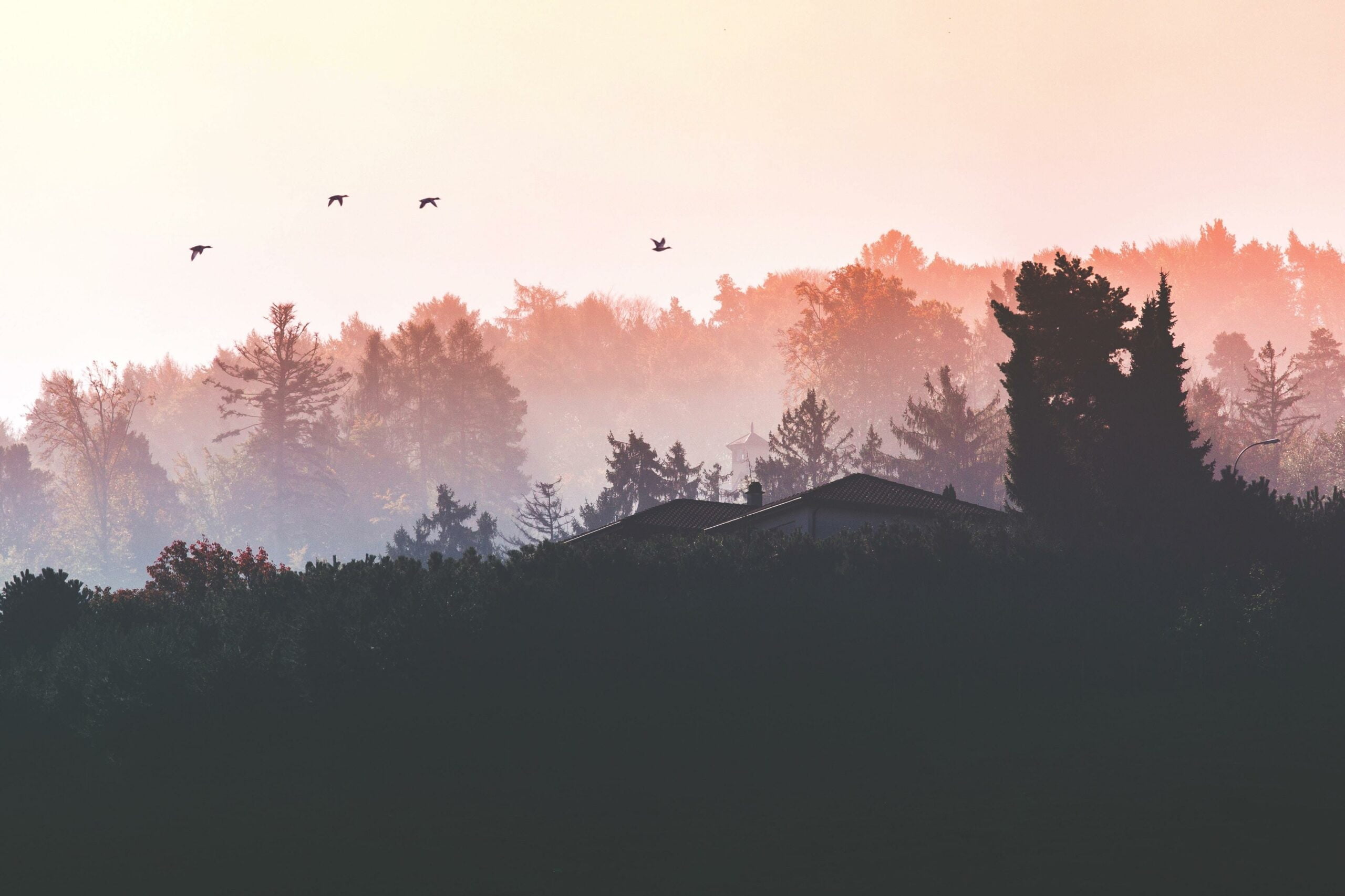Are you curious to uncover the hidden gems of landscape architecture? Look no further! In this article, we embark on an exciting journey to unravel the fascinating world of facts about landscape architecture. From the awe-inspiring principles that underpin this discipline to the innovative strategies and cutting-edge trends that are shaping its future, we leave no stone unturned. Whether you’re an architecture enthusiast, a design aficionado, or simply someone intrigued by the artistry of our surroundings, prepare to be captivated by the untold secrets of landscape architecture.

Facts About Landscape Architecture
Landscape architecture is a fascinating field that combines art, design, and environmental science to create beautiful and functional outdoor spaces. Whether it’s a lush public park or a meticulously curated garden, landscape architects have the ability to transform ordinary spaces into extraordinary ones. In this article, we will explore some intriguing facts about landscape architecture that will leave you with a deeper appreciation for this profession.
The Origins of Landscape Architecture
Did you know that the term “landscape architecture” originated from a book about Italian painters? In 1828, an English author named John Claudius Loudon published a book titled “An Encyclopaedia of Gardening” in which he coined the term. He used it to describe the art of arranging and designing outdoor spaces, drawing inspiration from the picturesque landscape paintings of the time. Since then, landscape architecture has evolved into a distinct discipline, incorporating elements of architecture, city planning, and horticulture.
Australia: The Landscape Architecture Capital
When it comes to landscape architecture, Australia takes center stage. With its diverse natural landscapes and innovative design practices, Australia has earned the reputation of being the landscape architecture capital of the world. Australian landscape architects are known for their ability to seamlessly integrate nature with built environments, creating sustainable and visually stunning spaces. From the iconic Sydney Opera House to the breathtaking Royal Botanic Gardens in Melbourne, Australia offers a plethora of awe-inspiring examples of landscape architecture.
The Best Places to Study Landscape Architecture
If you’re considering a career in landscape architecture, the United States and the UK are considered the best places to study. These countries boast renowned universities and institutions that offer comprehensive programs in landscape architecture. These programs provide students with the necessary skills and knowledge to excel in this field. From learning about site analysis and sustainable design to exploring the principles of urban planning and horticulture, students gain a well-rounded education that prepares them for the challenges of real-world projects.
The Multidisciplinary Nature of Landscape Architecture
Landscape architecture is a truly multidisciplinary field, encompassing a wide range of disciplines and areas of expertise. It combines elements of botany, horticulture, fine arts, architecture, industrial design, soil sciences, environmental psychology, geography, ecology, and civil engineering. Landscape architects must possess a deep understanding of these disciplines to create outdoor spaces that are not only visually appealing but also functional and sustainable. Their expertise allows them to harmonize natural and built environments seamlessly.
The Creative Elements of Landscape Architecture
As landscape architects, professionals in this field have the unique ability to create various elements within outdoor spaces. They can design everything from pathways and seating areas to water features and planting schemes. By carefully considering factors such as spatial relationships, circulation patterns, and user experience, landscape architects transform blank canvases into captivating landscapes. Through their creative vision, they enhance the aesthetic appeal of outdoor spaces while ensuring functionality and sustainability.
In conclusion, landscape architecture is a dynamic and interdisciplinary profession that merges art, design, and environmental science. From its origins in picturesque landscape paintings to its status as a prominent discipline today, landscape architecture continues to evolve and shape the world around us. Whether you’re strolling through a beautifully designed park or admiring a charming garden, it’s important to appreciate the thought, skill, and expertise that goes into creating these spaces. So, the next time you find yourself in awe of a well-designed outdoor area, remember the untold facts about landscape architecture that contribute to its beauty and functionality.
“Landscape architects have the unique ability to create captivating outdoor spaces that seamlessly blend art, design, and environmental science.”
Landscaping is a fascinating subject that holds many secrets waiting to be discovered. If you’re curious about the wonders of landscaping, we invite you to explore some intriguing facts about it. From the history of landscape design to innovative techniques for creating breathtaking outdoor spaces, our website has it all. Ready to dive in? Click here to uncover the remarkable facts about landscaping: facts about landscaping. Prepare to be amazed as you embark on this enlightening journey into the world of landscaping.
Facts About Landscape Architecture! Did you know that landscape architecture is not just about designing beautiful gardens and parks? There is so much more to it! If you are interested in learning some intriguing landscape architecture facts, click here. Alternatively, if you want to discover interesting facts about landscape architecture, this link will take you directly to the information you seek. So, go ahead, dive into the world of landscape architecture and explore its hidden wonders!
[landscape architecture facts]
[interesting facts about landscape architecture]
Advice for Landscape Architecture Students – Thorbjörn Andersson
[youtube v=”QKk-r34bRTc”]
The Significance of Sketches in Landscape Architecture
Thorbjörn Andersson, a renowned landscape architect, emphasizes the importance of hand-drawn sketches in the field. He believes that sketches are a pure and fragile representation of the initial ideas behind a project. Contrary to popular belief, sketches are not just rough drawings, but rather a means of tracing down the conception of a landscape architecture project. According to Andersson, starting a project with a computer-aided design (CAD) drawing may result in a less precise outcome, as sketches allow for exploration and the consideration of various alternatives. “The sketch is a test bed,” he states.
The Role of Freehand Drawings
Andersson shares that even in the digital age, many landscape architects, including his own team members, still rely on freehand sketches in the early stages of a project. Freehand drawing, in his opinion, is more closely connected to the generation of ideas. It allows for experimentation and freedom of expression. He believes that the combination of different sketching techniques, both digital and hand-drawn, can coexist and bring out the best in a landscape architecture project.
Creating Trust with Clients through Sketches
One of the advantages of using freehand sketches is the ability to impress clients who may not possess the same drawing skills. Andersson admits that using this “dirty trick” of creating good freehand drawings can effectively gain the trust of clients. By collaborating with clients and sketching ideas right before their eyes, landscape architects not only build trust but also establish a better understanding of the clients’ preferences and expectations.
Techniques and Considerations in Sketching
Andersson offers several valuable tips for aspiring landscape architecture students when it comes to sketching. Firstly, he suggests writing down five sentences about what you want to achieve before starting to sketch. This approach helps to focus the mind and provide a clear direction. Additionally, using a dull pen rather than a sharp one can encourage more exploratory and fluid lines. Setting time limits while sketching, such as two minutes per iteration, can help foster creativity and prevent overthinking. Furthermore, choosing a smaller paper size allows for a more intimate and manageable sketching experience.
Combining Different Techniques
According to Andersson, landscape architects can combine various techniques to create compelling designs. He mentions the use of aerial photographs projected onto a white screen, along with hand sketches, to create a unique blend of digital and manual elements. He also incorporates sketchup models and computer-generated colors to enhance presentations and make the designs more vibrant and lifelike.
In conclusion, although landscape architecture has embraced technology, hand-drawn sketches remain a vital aspect of the field. They provide a window into the conception and development of a project, allowing landscape architects to explore different alternatives and capture the essence of their ideas. Through sketches, landscape architects can establish trust with clients and effectively communicate their vision. Whether working with freehand drawings or combining various techniques, the art of sketching continues to play a significant role in landscape architecture. As Andersson eloquently puts it, “History has proved that these two things can combine and exist side by side. They both have their right of existence.”
FAQ
What is landscape architecture?
Landscape architecture refers to the development and decorative planting of gardens, yards, grounds, parks, and other planned green outdoor spaces.
How is landscape architecture related to other fields?
Landscape architecture is considered one of the decorative arts and is closely allied to architecture, city planning, and horticulture. It incorporates aspects of botany, horticulture, fine arts, architecture, industrial design, soil sciences, environmental psychology, geography, ecology, and civil engineering.
Where did the term “landscape architecture” originate from?
The term “landscape architecture” originated from a book about Italian Painters, which highlighted the connection between the art of painting and the design of outdoor spaces.
Which country is known as the landscape architecture capital of the world?
Australia is often regarded as the landscape architecture capital of the world, known for its stunning and innovative landscape designs.
Which are the best places to study landscape architecture?
The United States and the UK are widely recognized as some of the best places to study landscape architecture, offering top-notch educational programs and opportunities for aspiring landscape architects.
- Unlock 6000+ words beginning with he: A comprehensive analysis - April 20, 2025
- Mastering -al Words: A Complete Guide - April 20, 2025
- Master Scrabble: High-Scoring BAR Words Now - April 20, 2025
















